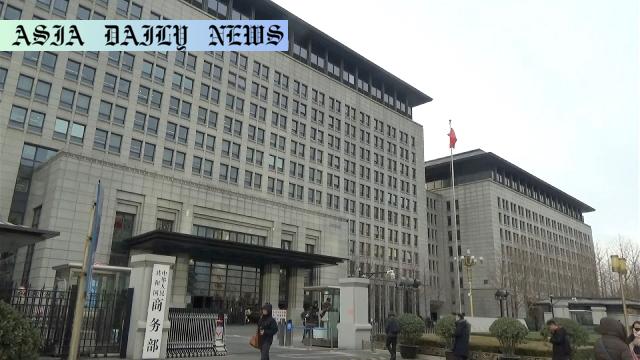Rare Earths restrictions affect EU car production; China expedites shipment approvals.
- China plans to expedite rare earths shipment approvals for EU companies.
- Beijing’s restrictions have adversely affected EU car manufacturers.
- The United States and EU continue to pressure China to ease restrictions.
- United States and China trade discussions to address rare earth delays.

Introduction
Rare earth elements, essential components in industries ranging from electronics to automotive sectors, have become a focal point of global trade tensions. Recently, the Chinese Ministry of Commerce announced its plans to fast-track the approval of rare earth shipments to European Union (EU) firms, potentially alleviating disruptions caused by stringent export restrictions. The strategic move aims to address supply issues that have forced some automobile factories in Europe to halt operations and stirred calls for more predictable trade practices from one of the world’s largest rare earth suppliers.
Impact of Rare Earth Restrictions in Europe
Beijing’s current restrictions on rare earths exports have had a notable impact on the European automobile industry. Rare earth elements such as dysprosium, neodymium, and terbium form critical components of high-performance magnets used in electric vehicles (EVs) and other automotive technologies. European automakers, which rely heavily on these materials, have faced setbacks as factories—unable to access necessary supplies—were forced to cease or scale back production. Prominent automakers, including Japan’s Suzuki Motor, recently suspended production of compact car models due to these disruptions. This has reinforced the urgency of resolving the trade impasse for European stakeholders.
China’s Approval Acceleration Plan
China’s announcement to accelerate the approval of rare earth shipment applications offers a glimmer of hope for impacted industries. By prioritizing faster processing for qualified applicants, Beijing seeks to mitigate the cascading effects of its earlier restrictions. The move is partly influenced by the EU’s continuous urging to ease logistical bottlenecks and restore equilibrium in industrial supply chains. However, questions remain about whether this change will address the deeper geopolitical challenges underlying these trade policies.
Global Trade and Diplomatic Implications
This issue is expected to feature prominently in upcoming trade talks between the United States and China in London. Both nations have experienced similar trade friction including mutual imposition of import tariffs, which were partially eased last month to foster bilateral trade. However, the US has criticized China’s delays in shipping rare earths, which risk further exacerbating supply chain vulnerabilities. The diplomatic undertones of these discussions underscore the delicate balance between economic interests and geopolitical rivalries.
Potential Challenges and Future Outlook
While expediting approvals might offer temporary relief to EU companies, long-term challenges persist. Other nations, particularly the United States and EU member states, are working to diversify their rare earth supply chains to reduce dependency on China. Investments in alternative suppliers, exploration of rare earth reserves domestically, and recycling initiatives are gaining traction. In parallel, the Chinese government continues to leverage its rare earth monopoly as a means of economic influence in global trade negotiations.
Conclusion
China’s initiative to fast-track rare earth shipment approvals signals a meaningful—if partial—response to the rising pressure from the EU and other nations. Nevertheless, this step underscores the urgent need for policymaking that ensures stable trade relationships without disproportionately vulnerable dependencies. For industries reliant on rare earth materials, this development may serve as a temporary reprieve while nations strategize toward establishing resilient and diversified supply chains.



Commentary
The Strategic Importance of Rare Earth Policy
The global significance of rare earth elements cannot be overstated. From smartphones to electric vehicles, these materials are integral to technologies that drive modern economies. China’s control over the majority of global rare earth production gives it a unique leverage in international trade, enabling it to influence markets worldwide. Accelerating the approval process for EU firms signals an acknowledgment of this critical industry’s interconnected nature. However, it also highlights the vulnerabilities inherent in over-reliance on a single dominant supplier.
Europe’s Supply Chain Realities
The disruptions in Europe’s automobile sector underscore the need for robust and sustainable solutions. Factories experiencing interruptions due to rare earth constraints face steep costs—not just economically but reputationally. As electric vehicle adoption continues growing, the demand for rare earth elements will only intensify. This raises pressing questions for EU policymakers and manufacturers: how can they safeguard supply chains against future instability?
Balancing Cooperation and Independence
While China’s move to expedite approvals is a step in the right direction, it doesn’t resolve the underlying problem—the lack of equitable global access to rare earth resources. Countries such as the United States and EU members must look beyond short-term solutions and work towards reducing dependency via technological innovation and strategic partnerships. For instance, scaling up research into rare earth substitutes or advancing recycling technologies could help mitigate future risks.
Broader Implications
Ultimately, the interplay between rare earth policies and global trade dynamics reflects a broader struggle for influence and negotiation power. As countries strive to secure their standing in a rapidly evolving global economy, issues like these serve as poignant reminders of the importance of collaboration, innovation, and resilient policymaking. While the immediate focus remains on alleviating rare earth supply bottlenecks, the long-term priority must center on creating sustainable solutions that benefit all stakeholders involved.